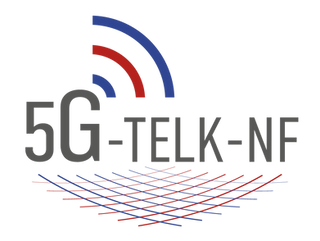Projects
Our projects are references to our past and current achievements, which we are allowed to talk about. We are pleased to be able to work with strong partners to push the technological boundaries of aviation!
SILVA
- The SILVA project (Latin for forest: search and identification of forest fire sources from the air using virtually monitored automatic aircraft) is dedicated to the earliest possible detection of forest fires using highly automated and cost-effective fixed-wing long-range drones.
- The overriding goal of SILVA is to research/develop a new, efficient technology for permanent and large-scale monitoring of forest areas at risk of fire and thus to minimize the increasing risk to forest areas, buildings, infrastructure and, last but not least, human lives from fire.
- SILVA is funded by the BMFTR and supervised by the project management organization SIFO. Further information can be found on the project's page (German).
HYDRO-BUNNY
- Project HYDRO-BUNNY will enable remote operation of refueling processes for hydrogen-fueled drones. It stands for HYdrogen Drone Refueling Operations - Base Utilization (for) Navigation (and control via) Network (at a remote) Yard
- Together with our partners, we use infrastructure-independent technology to produce and compress hydrogen, which can then be used for automated refueling of the drones.
- Project partners include TECCON, ZAL, and IFPT at TUHH. The project is co-funded by IFB Hamburg via EFRE-funding.
H2finity
- In the H2finity project, scalable hybrid-electric powertrains for drones and small aircraft based on fuel cells were researched and tested. Project partners in H2finity were Teccon, ZAL and Thelsys. The project was co-funded by IFB Hamburg
- In a pragmatic and practical approach, an airworthy and certifiable technology was to be developed that can be used quickly and directly for a wide variety of aircraft and applications after the end of the project
- A drone with a take-off weight of 28 kg and a wingspan of 3.6 m, which was developed, built and operated by mb+Partner, served as the test vehicle. The tested and optimized drive train was then further conceptionally developed to higher performance classes by the partners in the project
- The project's website gives further information
5G-TELK-NF
- Within the project 5G-TELK-NF, remote operation and automation of the ground carriage will be further developed - a step that is crucial for the success of the technology
- The aim is to use 5G technology to enable remote operation of the plant and thus ensure rapid responsiveness and efficient operation
- Project partners include EurA AG, Leichtwerk Research, Hanseatic Aviation Solutions, Hanke Konsek, Breitbandnetz Gesellschaft, OffTEC, Ibeo, TH and Uni Lübeck, GreenTEC Campus and the municipalities of Tinningstedt, Enge-Sande, Leck and Klixbüll. The project was co-funded by the Federal Ministry for Digital and Transport (BMDV)
- Feel free to check out the project's website!
ElektRail
- The ElektRail project represents an important step for mb+Partner in expanding its existing unique selling points. The knowledge gained to date has been expanded and transferred to a 400 kg, electrically powered and autonomously flying small aircraft, whereby runway-independent operation in this weight class represents new technological territory.
- German partners are Elektra Solar, Nordwig, DLR, RWTH Aachen, TUHH, Aircraft Design Certification, TÜV Rheinland, and Airbus Airborne Solutions. The project was co-funded by the Federal Ministry for Economic Affairs and Climate Action (BMWK)
- A cooperation with the Swedish partners Linköping University as well as MSB (Swedish Civil Protection) shall ensure an exploitation of the results beyond the borders of Germany
- Further information can be found here
REALISE
- With the REALISE project, mb+Partner entered the first step of the realization phase for the GroLaS ground vehicle concept
- REALISE stands for "Runway independent automatic launch and landing system" and pursued the development of a test facility for unmanned aircraft on a market-relevant scale
- Partners were Nordwig, Hanseatic Aviation Solutions, RWTH Aachen, TUHH, Thelsys, DLR, TÜV Nord and Airbus. The project was co-funded by the Federal Ministry of Education and Research (BMBF)
- The website gives further information about the project
Airport 2030
- The Airport 2030 project addressed approaches to improved ground processes that make a measurable contribution to enhancing the quality, overall performance, and environmental sustainability of the air transportation system
- mb+Partner researched the implementation of a ground-based landing gear system for commercial aircraft called GroLaS (Ground-based Landing gear System), and obtained an international patent for the technology
- Project partners were DLR-Lufttransportsysteme, DLR-Institut für Flugführung, DLR-Institut für Flughafenwesen und Luftverkehr, Institut für Telematik (TU Hamburg), Institut für Verkehrsplanung und Logistik (TU Hamburg), Institut für Technische Informatik Systeme (University of Hamburg), HAW Hamburg, Aero Design & Systems Group, Hamburg Airport, Siemens, Airbus Operations. The project was co-funded by the Federal Ministry of Education and Research (BMBF)
- The project's results are summarized here, the final report of the project is available on the DLR-website







